流亡的珊瑚礁 Exiled Reef
- Chris
- 2015年6月11日
- 讀畢需時 4 分鐘
已更新:2022年9月26日

2015國際環境藝術季_潮藝術-"樂園:永續海洋"
作品名稱:流亡的珊瑚礁
創作者:李蕢至
尺寸:18m(L)x6m(W)x2.5m(H)
材料:基隆海岸的漂流木、麻繩、回收漁網、由木棍與回收竹筷作為榫接材料
地點:環保復育公園緩坡,基隆,臺灣 (25.145986N, 121.805194E)
描述:
李蕢至的大地藝術裝置在一個朝海的草坡上。蜿蜒而下的珊瑚的意象提醒我們關注全球海洋中瀕危的珊瑚礁。
台灣四面環海,但我們距離海卻那麼地遙遠。
作品名稱為"流亡的珊瑚礁"。我將珊瑚比擬成一個民族,"流亡"有另一層"離散"(回不了家)的意涵。珊瑚原有的棲地消失了,已無法回復,只剩下了白化後的枯槁形體在這塊土地上漂浮著,試圖牽引出那記憶中曾在的自然。在生態共生共存中,回應著海洋永續的大題。
珊瑚礁有"海中的熱帶雨林"之稱,它能夠減低海岸線侵蝕的速度,猶如自然的防波堤。並且能夠維持海洋生物的多樣性、維持漁業經濟、生態觀光與現代醫學的藥用價值。但是,我們的自然海岸比率正逐年地減少,在海洋生態上是個很嚴重的警訊。因此,我選擇了珊瑚作為與環境對應的思考,並作為作品的造型的發想對象。
當我在進行大地藝術創作時,場所是必定考量的因素,它關係到該地的地理與歷史的紋理。此處是填海造陸而成的土地,將多年前的垃圾山轉變成的復育公園。早期在此也存在許多的咾咕石厝,而咕咾石即是死掉的珊瑚。在此作中,我創造珊瑚的抽象造型與海浪的流線,並將它相互拼接座落於此草原的緩坡上,就像是海原上漂浮流動著的有機體,也猶如白化的珊瑚,牽引出那過去美麗的景像。
每次的大地藝術創作我習慣就地取材或就近取材進行創作。盡量減少材料旅程的消耗。而這次選擇用漂流木的理由很單純,在材質的屬性上,我覺得漂流木屬海,而竹子屬山。在詮釋"永續海洋"的議題上是個很好的材料。尤期在海島國家上,漂流木更是靠海族群共同的記憶。
在安裝上我採用木榫方式拼接組成,保有漂流木本身的原生質地,也更加堅固。在作品前後兩端我使用了人造的非自然素材,試圖創造某種材質上的衝突感與奇妙的平衡關係,同時也是漁港地區常見的捕魚工具。在海底中常見到許多棄置漁網造成海洋環境的浩劫,(過去的魚網多是以植物纖維編成,棄置後容易被環境分解,但現代的化學纖維卻會長時間存在)。以此訴說人為因素才是造成海洋破壞的主因。它像是血液,又是束縛。
另外,作品上留有幾處供人休憩乘坐的地方,試圖與民眾親近。希望觀者在此處看海觀山與想像的同時,也能夠想想我們地球的母親--海洋。

2015 International Marine Environment Art Project , “Paradise: Sustainable Oceans”
Title: Exiled Reef
Artist: Lee, Kuei-Chih
Size: 18m(L)x6m(W)x2.5m(H) Materials: Driftwood collected along the shore in Keelung, sisal rope, recycled fishing net, wooden rods and recycled chopsticks used as nails
Location: Eco Park Ramp, Keelung city, Taiwan (25.145986N, 121.805194E)
Year: 2015
Description:
Lee, Kuei-Chih’s land art installation creates a sculptural coral reef meandering down a grassy slope toward the sea to remind us about the endangered coral reefs in the world’s oceans.
Taiwan is surrounded by the sea, yet we are so far from the sea.
The artwork's title is "exiled reef." I metaphorically use coral as people, and the word "exile" means unable to return home.
Coral’s original habitat has disappeared and it has been unable to recover, leaving only whitened withered bodies floating in the sea, and trying to pull at our memory of nature when coral thrived in the oceans.
My artwork responds to the theme of sustainable ocean in ecological coexistence.
Reefs are "sea rainforests". They could reduce the speed of coastal erosion, like a natural breakwater.
And coral reefs can maintain marine biodiversity, preserve the fisheries economy, provide eco-tourism and also they have medicinal value for modern medicine.
However, our natural coastal coral reef ratio is reduced year by year; in the marine ecosystem it is a very serious warning. Therefore, I chose coral as the corresponding thinking for the environment, and as the object of the shape for the work.
When I am making the land art, the place or site is an important element to consider.
It is related to geography and to the historical texture of the ground.
Here where I made my artwork in Keelung it is an artificially reclaimed land; after years of the garbage mountain it is now turned into an eco-park.
A long time age, there were many houses built from dead coral reefs.
I created many abstract shapes as coral reefs and waves in this work, and combined them with each other on the prairie toward the sea, like floating organisms flow on the sea and also like bleached coral to remind us of the past beautiful scene.
I use local materials or nearby materials to create my land artwork each time, and I try to minimize the journey of the materials.
I think driftwood has properties of the sea, and bamboo belongs to the mountains. So I used driftwood to express the idea of a "sustainable marine environment".
Driftwood also has the shared memories on the island, especially for residents near the sea.
I used wooden dowels to join each piece of driftwood in order to keep its original texture and make the structure strong enough.
On the other hand, I used a little bit of artificial recycled fishing net as a symbol to create the sense of conflict and make a strange balancing relationship in this work. We can see the fishing net here everywhere since this is a fishing community. And we also can see many abandoned fishing nets in the ocean that are destroying the marine environment. More nets in the past were woven from plant fibers that are easily biodegraded after disposal, but modern chemical fibers always exist for a long time. I used this artificial fiber net to tell that the human factor is the main cause of marine destruction. It looks like blood and bound up in the structure.
In addition, my artwork has several places for people to rest and sit. I hope people get close to the artwork and stay longer here. We can enjoy the beautiful scenery and also be able to think about our Earth Mother - the ocean.
photo by Timothy S. Allen























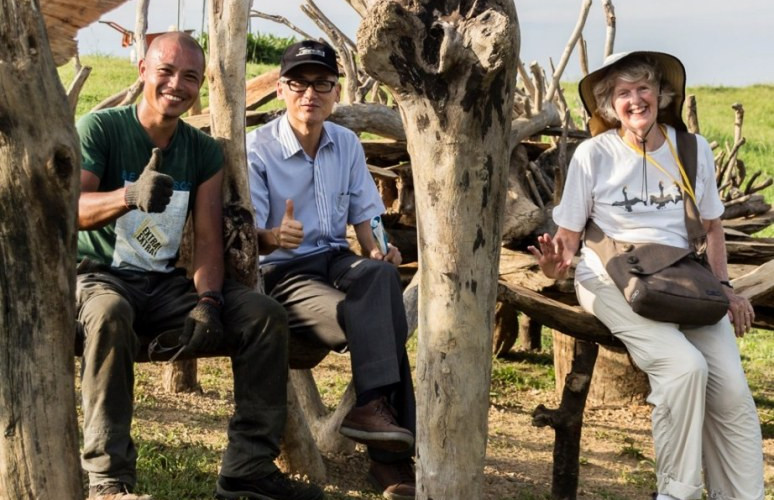


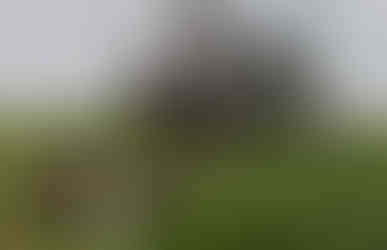










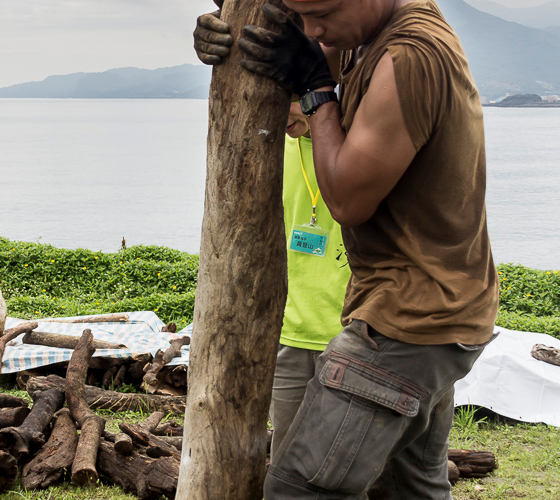


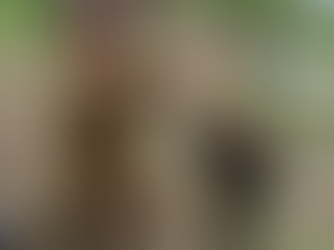




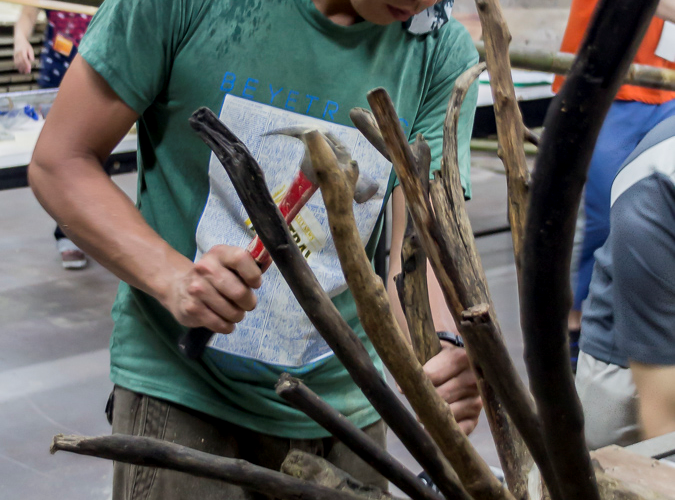


留言